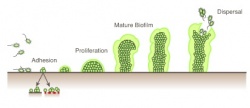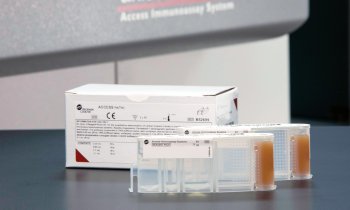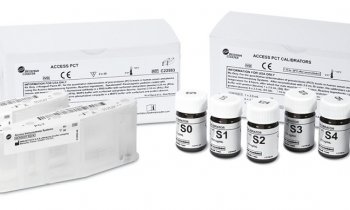Infection Control
Periprosthetic infections: a new disease
Early diagnosis and effective therapy of periprosthetic joint infections (PJI) remain a challenge for many physicians due to the complexity and heterogeneity of clinical symptoms. As individual solutions are needed, opportunities to discuss and exchange ideas are welcome, as clearly shown during the satellite symposium on the diagnosis and treatment of periprosthetic knee infections held at this year’s German Congress for Orthopaedics and Trauma Surgery.

Periprosthetic infections must be taken seriously – The two-year infection rate for knee replacements is currently five percent, according to arthroplasty expert Professor Rudolf Ascherl, from the Hospital Medical Centre Stiftland Tirschenreuth, joint speaker with Professor Andrej Trampuz, from Berlin’s Charité Medical University.
Due to demographic developments, an increase in infection rates is anticipated; indeed the absolute number of periprosthetic knee infections is already rising. Therefore, says Ascherl, periprosthetic infections should be considered a new disease, which, to a certain extent, is unavoidable and requires specific diagnostic and therapy concepts. In addition, a stronger focus on periprosthetic infections is expedient for financial reasons since infection treatment is expensive, and the later the diagnosis is made, the higher the costs.
The 21-days rule – If an acute infection is diagnosed early, the movable parts of the prosthesis can often be preserved while late detection usually means the entire prosthesis has to be replaced. Day 21 of the infection, Trampuz explains, is the cut-off day: by now the local biofilm produced by the pathogens is too stable for the patient’s immune system, or antibiotics, to be effective.
Even more importantly, individual bacteria leave the biofilm to colonise the interface of the prosthesis and the bone, thus causing a fistula or osteomyelitis around the implant. At that point, Trampuz underlines, full revision surgery becomes necessary.
Low-grade infection – How to deal with culture-negative infections: Diagnosing a periprosthetic infection is complicated because it can develop a multitude of symptoms. The diagnosis of a chronic or so-called low-grade infection is particularly difficult because they are often detected months, or even years, after the surgery. Slow-growing bacteria, such as Staphylococcus epidermidis or Propionibacterium acnes, which tend to fall through the microbiology grid, frequently cause them.
Both professors recommended a joint punction with microbiological analysis of the synovial fluid and white blood cell count (concentration in periprosthetic infections >2000/ μl leukocytes or >65 % granulocytes) to confirm the infection. ‘When microbiology and cytology tests are performed at the same time, the results have a sensitivity of 98 percent and a specificity of 99 percent; thus even ‘low-low-low-grade’ infections can be diagnosed,’ Trampuz points out. However, there is one drawback: the cell count only provides diagnostically relevant information two months after the surgery.
Antibiotic therapy – Trampuz underlines that detection of the pathogen is crucial. Particularly when a low-grade infection is suspected, to be able to detect the bacterium the patient must be off antibiotics for 14 days before sampling.
As soon as the culprit has been identified a pathogen-specific antibiotic therapy can be initiated. For two-stage exchanges, both experts strongly recommended an initial local antibiotic therapy, e.g. with a revision cement loaded with antibiotics or collagen sponges, followed by systemic antibiotic therapy. ‘Usually we do everything possible in terms of locally applied antibiotics, but then we go for a systemic antibiotic therapy,’ Trampuz explains. In the case study he presented at the symposium, the patient with MRSA underwent temporary arthrodesis using revision cement loaded with gentamicin and vancomycin. Following the prosthesis replacement, 14 days later, and a resistance test, she received levofloxacin and rifampicin orally.
However, without extensive debridement, neither the best local nor the best systemic antibiotic therapy will be effective. Surgeons and infectious disease specialists have to cooperate to ensure the success of any periprosthetic infection therapy.
Individualised therapy – Success shows the way ahead. ‘There isn’t one single therapy concept that you can apply across the board, Ascherl said when summarising the tutorial. ‘Rather, you have to develop your own concept that has proven to be reliable and successful.’ This is where the symposium organiser Heraeus Medical provides support. The company, together with Swiss orthopaedics (SO) and the Swiss Society for Infectious Diseases (SGInf), has published the compendium ‘Infections of the musculoskeletal system’.
Additionally, the educational app for iPad ‘Essentials in Diagnostics of Periprosthetic Joint Infection (PJI)’ from Heraeus Medical provides practical orientation based on case studies.
* The educational app can be downloaded free of charge from the App Store.
The book ‘Infections of the musculoskeletal system’ can be ordered free of charge in German (2013) or English (2014) at www.heraeus-medical.com/
18.12.2014











